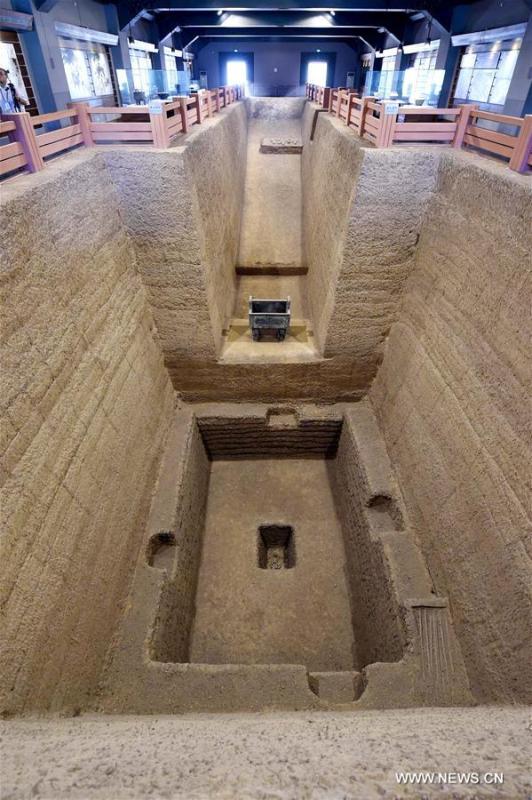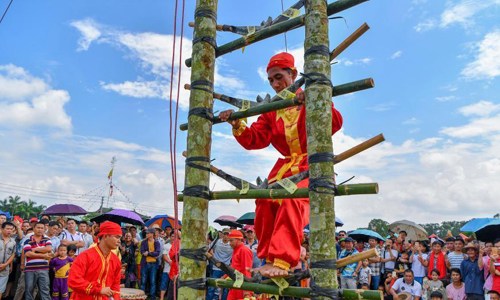
Photo taken on July 13, 2016 shows a horse-buried pit at the mausoleum site of Yinxu, or the Ruins of Yin, one of China's oldest archaeological sites, in Anyang, central China's Henan Province. Named after the last capital of China's first recorded dynasty Shang (16-11 cent. BC), which was in Anyang, Henan, the Ruins of Yin were famous for the discovery of oracle bones and script. (Photo/Xinhua)

People visit the museum of Yinxu, or the Ruins of Yin, one of China's oldest archaeological sites, in Anyang, central China's Henan Province, July 13, 2016. Named after the last capital of China's first recorded dynasty Shang (16-11 cent. BC), which was in Anyang, Henan, the Ruins of Yin were famous for the discovery of oracle bones and script. (Photo/Xinhua)

Photo taken on July 13, 2016 shows an exhibition hall at the mausoleum site of Yinxu, or the Ruins of Yin, one of China's oldest archaeological sites, in Anyang, central China's Henan Province. Named after the last capital of China's first recorded dynasty Shang (16-11 cent. BC), which was in Anyang, Henan, the Ruins of Yin were famous for the discovery of oracle bones and script. (Photo/Xinhua)

Photo taken on July 13, 2016 shows pits for offering sacrifices at the mausoleum site of Yinxu, or the Ruins of Yin, one of China's oldest archaeological sites, in Anyang, central China's Henan Province. Named after the last capital of China's first recorded dynasty Shang (16-11 cent. BC), which was in Anyang, Henan, the Ruins of Yin were famous for the discovery of oracle bones and script. (Photo/Xinhua)

People visit the museum of Yinxu, or the Ruins of Yin, one of China's oldest archaeological sites, in Anyang, central China's Henan Province, July 13, 2016. Named after the last capital of China's first recorded dynasty Shang (16-11 cent. BC), which was in Anyang, Henan, the Ruins of Yin were famous for the discovery of oracle bones and script. (Photo/Xinhua)






















